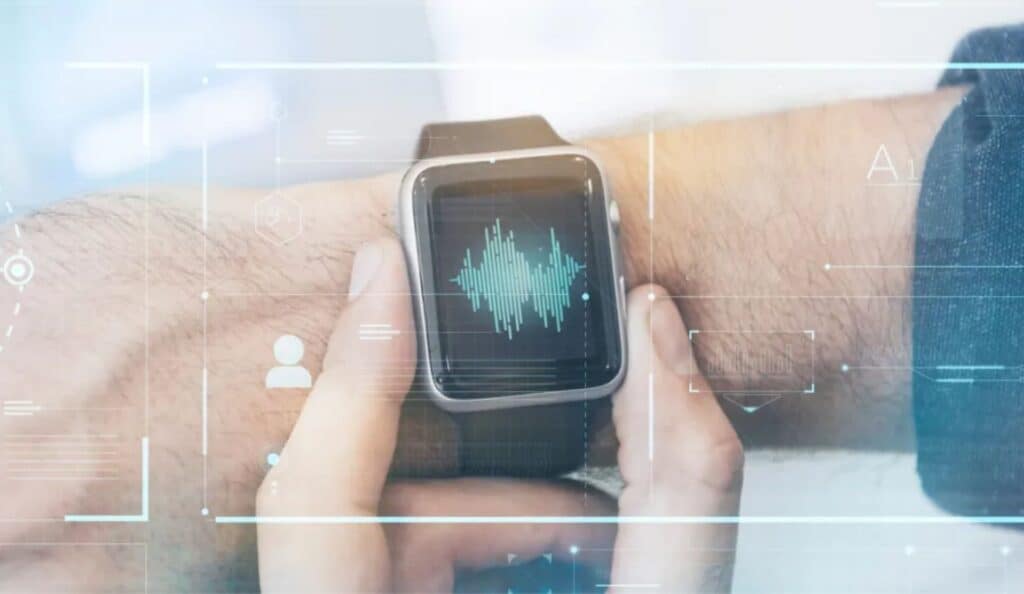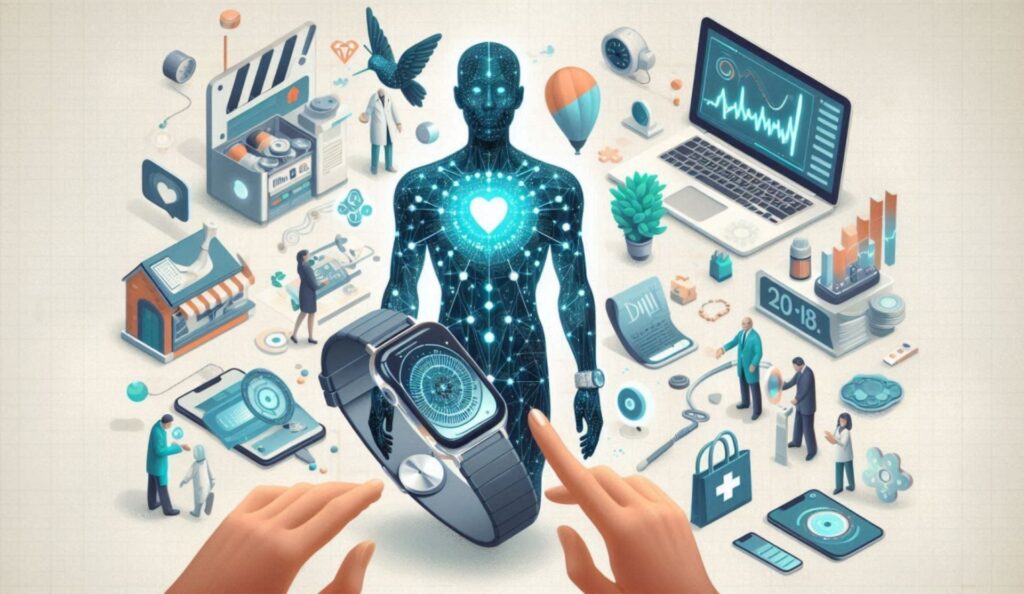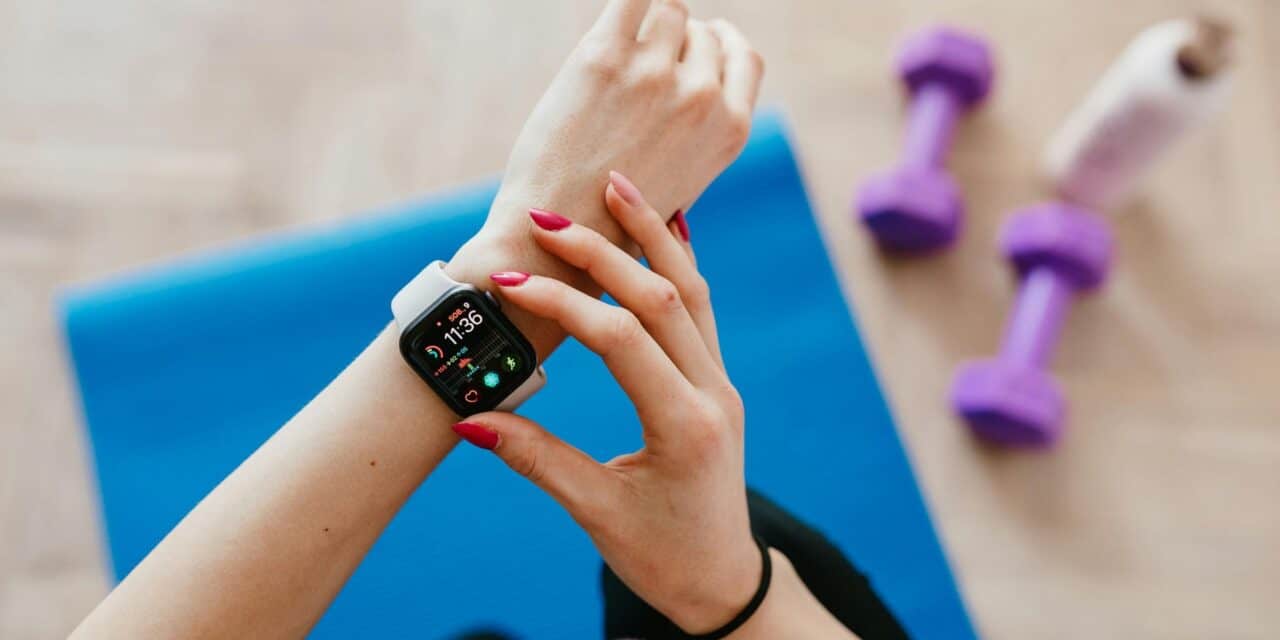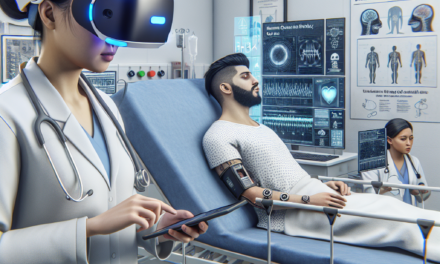Growing immensely in popularity, wearable health devices such as smartwatches and fitness trackers can monitor health data. They can track vital parameters like heart rate, activity levels, sleep patterns, and blood oxygen levels. Users are routinely aware of their health and health standards, encouraging them toward an alternative healthy lifestyle. All these devices are poised to become very useful by aiding in personal health management.
The Development of Health Wearable Technology
Wearables are electronic devices that can be worn on the body or in the clothes. They are popular in entertainment and fitness and are starting to become useful in healthcare too. Most wearables now available have their focus on measuring a handful of health metrics such as ‘heart rate’ or ‘activity’, most times having difficulties in the accurate assessments of other health markers. However, once these limitations are addressed, this technology has the potential to improve precision medicine and make individualized treatment possible.
Wearable devices mainly focus on tracking physical activity, which helps measure current health and potential future health risks. Using these devices in medical care could have helped overcome challenges in adding them to healthcare systems. Other challenges include different devices collecting data in different ways and difficulties adding this data to electronic medical records.
Research shows that health behavior models and personal guidance lead to more successful digital health programs. However, we still don’t fully understand what makes wearable devices work well in healthcare settings. While some critics say activity tracking can harm health behavior, others dismiss it as just a fitness trend. Yet, many studies prove that wearables improve users’ health more than traditional care methods
National Institutes of Health Centres

Two National Insitute of Health Centers held a meeting to discuss how wearable devices are being used in healthcare. The meeting focused on two successful ways these devices were used to improve patient care compared to regular methods.
Kaiser Permanente and Ochsner Health System created programs using home health devices that connect to electronic health records. Kaiser’s program helped manage diabetes, while Ochsner’s focused on high blood pressure. These programs allowed patients and healthcare workers to communicate instantly, leading to better patient care.
Kaiser’s program tracked blood sugar levels with healthcare team support, cutting in-person visits by half. Ochsner’s program used blood pressure monitors and other wearables for health coaching and medication adjustments, helping 71% of patients control their blood pressure compared to 31% with standard care.
These success stories show how wearable technology can be effectively used in healthcare. Other healthcare organizations can learn from these examples to improve patient care using wearables. The future looks promising for wearable devices in medicine, as they can do much more than just track daily activities.
Wearable Health Devices’ Advantages for Preventive Care

Wearable health devices have made relatively simple technological improvements to transform them into the coolest gadgets in the coming decade. Many health variables, such as oxygen blood levels, heart rates, activity levels, and sleep patterns, will be discussed, but they will still be worn on the body. Renowned giants such as Apple, Fitbit, and Garmin have gone ahead to manufacture devices that allow people to turn themselves in their everyday lives toward a healthier direction, so health participation becomes simple.
Early Health Problem Identification
Wearable medical technology offers several advantages, especially when it comes to detecting health issues early. Wearables can monitor users continuously, detecting irregularities like heartbeats or oddities in sleep patterns and prompting users to seek medical attention so that they can do this over time before anything major arises.
Individualized Health Perspectives
These devices can analyze the trends in personal data and, hence, offer health insights geared towards individuals. This allows for personalized recommendations that lead to general wellness, such as increased activity levels or improved sleep patterns.
Improved Involvement of Patients
Increased patient engagement is an important benefit. With goal setting, health monitoring, and real-time feedback, a user is more likely to become engaged in his or her health journey and adopt a healthier lifestyle.
Telehealth and remote monitoring
Moreover, monitoring patients remotely is made possible by wearable technology, especially for patients suffering from long-term conditions. Real-time availability of data to the healthcare professional will promote timely intervention and modification of treatment plans, particularly in telehealth settings.
Programs for Preventive Health
Last but not least, the application of preventive health programs is another use of wearable medical technology by companies. The employer can promote the good use of these devices by employees to encourage the cultivation of healthy habits, thereby reducing healthcare costs and increasing productivity.
Challenges: User Compliance, Privacy, and Data Accuracy
Wearable health technology is faced with tremendous hurdles to becoming more mainstream in its usage. One of the major issues is that if the devices are not accurate in their measurements, the health assessments provided based on such measurements could be inaccurate, potentially harming patient care. Sensor technologies and data calibration need to be thoroughly improved for these gadgets. Nevertheless, variables like user motion, environmental conditions, or wear and tear of gear can still affect data accuracy, meaning that this area needs more investigation.
Privacy issues present another major barrier. When health data are collected and shared, the user may be vulnerable to privacy risks, especially when unauthorized entities gain access to the data. User protection mechanisms are somewhat weak because of the lack of appropriate legislation: for example, in the United States, the HIPAA Act does not seem to cover data from commercial wearables. To counter these issues, it would be better to have user permission procedures, privacy policies, and encryption systems in place. In addition, a considerable number of users are not aware of privacy risks associated with wearables, which only demonstrates the need to educate consumers about protecting their sensitive health data.
User compliance is another gigantic challenge standing in the way of the future sustenance of the technology. Many people stop using these gadgets due to discomfort, disenchantment, or privacy concerns. Enhanced battery life, user-friendly design, and seamless integration of wearables into consumers’ daily lives are some of the vital factors in improving user compliance. In addition, showcasing the unique benefits of the technology through personalized health insights will keep users interested and committed.
The Negative Aspect of Wearable Technology
This new trend can be more problematic than beneficial; hence the security, privacy, health hazards, and the inherent issues of health risks found in this kind of technology must be highlighted. With the increased utilization of these devices, the factors related to privacy and security are getting more serious. There might be the possibility of risk, wherein the majority of customers have no valid means of confirmation of the ways their data is collected, stored, or otherwise processed.
Hackers can utilize the sensitive information that these gadgets collect, including information about a person’s whereabouts and personal choices. Concerning privacy policies, lack of specificity might create concerns about data sharing with their business partners, even though the companies maintain they do not sell data to others. This kind of ambiguity can cause major security breaches in terms of identity theft and manipulation of personal information.
Wearing something continuously, however, may be worse in many ways for users’ health, especially for those with pre-existing health conditions. Increasingly, wearables are being introduced to the work environment, which poses new privacy and security challenges for employees. Many workers are uncomfortable with the surveillance, thus, affecting their comfort and productivity. If companies wish to have a long-term future of success for wearable technologies, they must solve these issues and establish security measures for all users.
Technological Developments in Wearable Health

New Developments in Wearable Technologies
Wearable technology is rapidly changing the way treatment is done, making it personal and more efficient. With this advancement in wearable medical technology, it promises a lot in early diagnosis, treatment planning, and real-time monitoring. Healthcare devices moved from applications beyond basic trackers to primary interventions for chronic illness management and enhancement of patients’ outcomes. The major advances, at present, are in machine learning and artificial intelligence (AI), as these new technologies optimize health data processing and unlock new possibilities for intervention by physicians as well. In addition, advances in flexible electronics and smart textiles will add to the convenience and availability of wearable devices. Long-term wearability issues are expected to be addressed through sensor miniaturization and battery-life improvements.
Developments in Biometrics and Sensors
Groundbreaking advancements in sensors and biometrics are transforming the wearable health technology evolution, enabling continuous monitoring of critical physiological parameters including heart rates, temperatures, and glucose levels. These electrochemical, optical, and mechanical sensors extract vital health data from body fluids such as sweat, saliva, and blood, accumulating it on a continuous basis. Real-time data collection improves patient comprehension for diagnosing them early and giving precise interventions at times. Biometric sensors also have become biocompatible, biodegradable, and self-healing, suitable without discomfort for long-term monitoring. The next most popular tendency among medical devices is multifunctional installed smart wearable sensors for monitoring vital signs with detail and accuracy. The field of nanotechnology added several features in advanced wearable sensors that make them smaller, more efficient, and adaptable to various environmental conditions. However, limitations in power supply, data transmission insecurity, and incorporation in healthcare systems remain other challenges to overcome.
Combining AI and machine learning with wearables to enable predictive analytics
The integration of artificial intelligence (AI) and machine learning (ML) in wearable health technology thus revolutionizes healthcare in terms of data collection, analysis, and application. AI-powered wearables collect large amounts of health data in real-time to spot potential health problems early. These devices constantly track body measurements, allowing timely responses to manage long-term health conditions. As the devices gather more data, machine learning makes them better at providing accurate, personalized health advice. AI devices analyze how people behave and suggest personal improvements. While this is helpful, there are concerns about privacy and how well these systems work with current healthcare systems. To help people trust and understand AI in healthcare, we need AI systems that can explain their decisions clearly. The combination of AI and machine learning will keep changing how we prevent illness and provide personalized healthcare.
Implantable wearables and smart fabrics
Smart fabrics or implantable wearables will replace some other components by providing quality health care, quite promisingly integrating health monitoring into everyday life. Smart fabric-based sensor technologies collect real-time health condition data, including heartbeats and temperature monitoring. This capability enhances health care management in chronic diseases and the elderly population, thus improving personal management of health and outcomes. Such intelligent materials break the barrier of the hospital environment by merging it with home life, thus alleviating the invasiveness and enhancing user-friendliness of the medical monitoring process. Meanwhile, implantable wearables are placed inside the body for monitoring the most important parameters of health, like glucose levels for diabetes or cardiac function for heart patients. The pairing of these devices with advanced AI and communication technologies enables real-time data sharing with healthcare providers for timely interventions and personalized treatment plans.
Conclusion
From basic fitness trackers to advanced medical gadgets for constant health monitoring and early disease detection, wearable health technology has come a long way. These advancements have the potential to greatly shift the healthcare landscape by ushering in a proactive and preventive approach to care through biosensors, smart fabrics, and AI integration.
However, several challenges stand in their way, even as these technologies promise great benefits. Important challenges such as data privacy, device inaccuracy, and the compliance of users act as hindrances to the wide-scale adoption of these technologies. This calls for measures to improve health outcomes and healthcare policy use.
Working together, tech experts, medical professionals, and policymakers must shape the future of healthcare. To make healthcare both affordable and effective for all, we need to give everyday doctors easy-to-use health technology. This can only happen when different fields work together.





